

Effect of Metarhizium brunneum application method on wireworm damage to potato
Sustainable Agriculture Student Research Project
Objective: Compare different M. brunneum application methods in terms of wireworm damage to potatoes
Introduction:
Wireworms (Coleoptera: Elateridae)
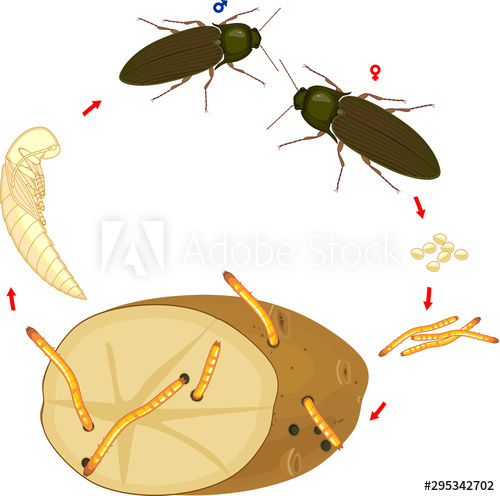
- Reduce marketable potato yield by tunneling into tubers.
- Thirty-nine known species damage tuber crops.
- Species differ in their susceptibility to pathogens and level of damage to crops.
- Agriotes obscurus is a predominant wireworm pest in Canada. It can live for 2-5 years as a soil-dwelling larva before becoming an adult click beetle and living aboveground briefly to feed and reproduce.
Metarhizium brunneum
- Entomopathogenic fungus found in soils everywhere.
- Germinating conidia penetrate the waxy cuticle of soil-dwelling insects.
- The fungus grows throughout the insect body, killing its host in a week or more.
- Isolate MetLRC112, obtained from an infected wireworm cadaver near Agassiz, BC, is being mass-produced and tested as a potential biocontrol of wireworm pests in field agriculture.
Attract-and-kill Method
- A carbon dioxide source, such as decomposing rolled oats, is used to attract wireworms to cultured M. brunneum conidia.
- Spot treatment beneath potato seed pieces has been effective, but labor requirements may be an obstacle to large-scale success.
- Potential alternative application methods requiring less precision include banding strips along crop rows and untargeted broadcast application.
Materials and Methods:
Location: KPU Orchard, Richmond, BC
Experimental Design:
- Randomized complete block design with four treatments and seven replicates (28 plots)
- Three rows of six potato plants per plot (18 plants in 3 x 3 m plot)
- One meter buffer, planted to buckwheat, between replicates
- Potatoes planted on 20 June and harvested on 8 October
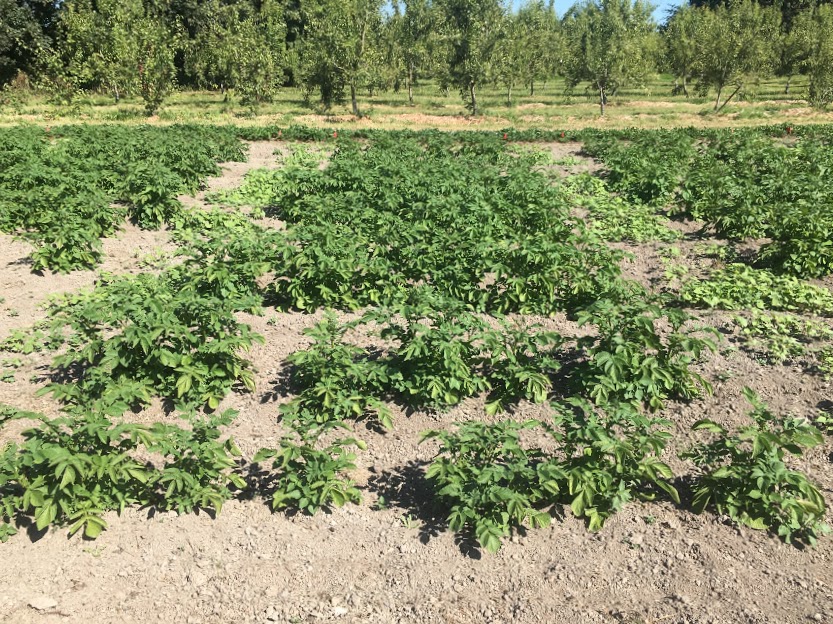
Experimental block of potatoes with buckwheat buffer between blocks, July 29
Treatments
- Control: No added source of CO2 or M. brunneum
- Spot Treatment: 34 g M. brunneum formulation blended with 71 g rolled oats divided into 18 equal portions, placed below each seed piece in plot at planting.
- Banded Strip: 34 g M. brunneum formulation blended with 71 g rolled oats and divide into three equal portions, banded along the bottom of each planting trench in plot before planting.
- Broadcast: 34 g M. brunneum formulation blended with 425 g of dry rice spread evenly over plot before planting.
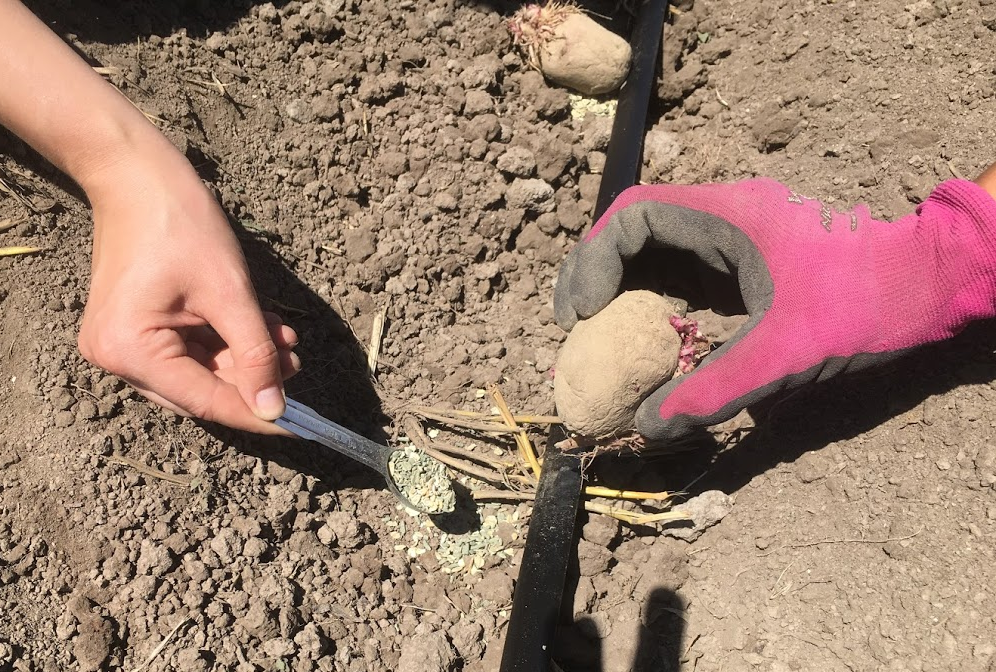
Spot treatment with M. brunneum and rolled oats, June 20, 2019.
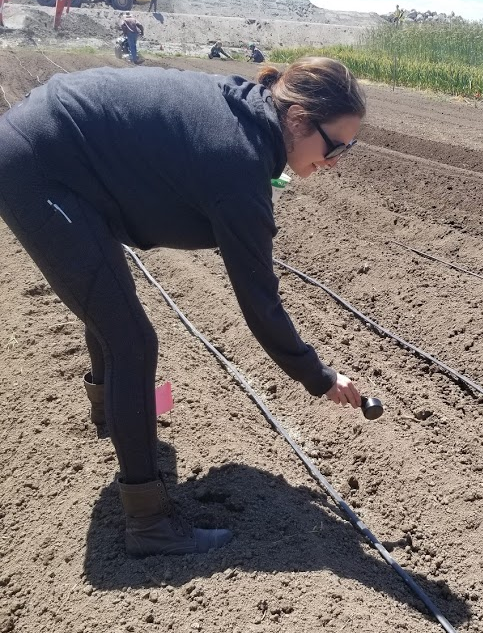
Banded treatment application before potato planting, June 20, 2019.
Data Collection:
- Data collected from centre row of each plot
- Potatoes washed after harvest and stored at 4º C
- Potato weight, count, and wireworm damage (holes per potato and per plot) recorded
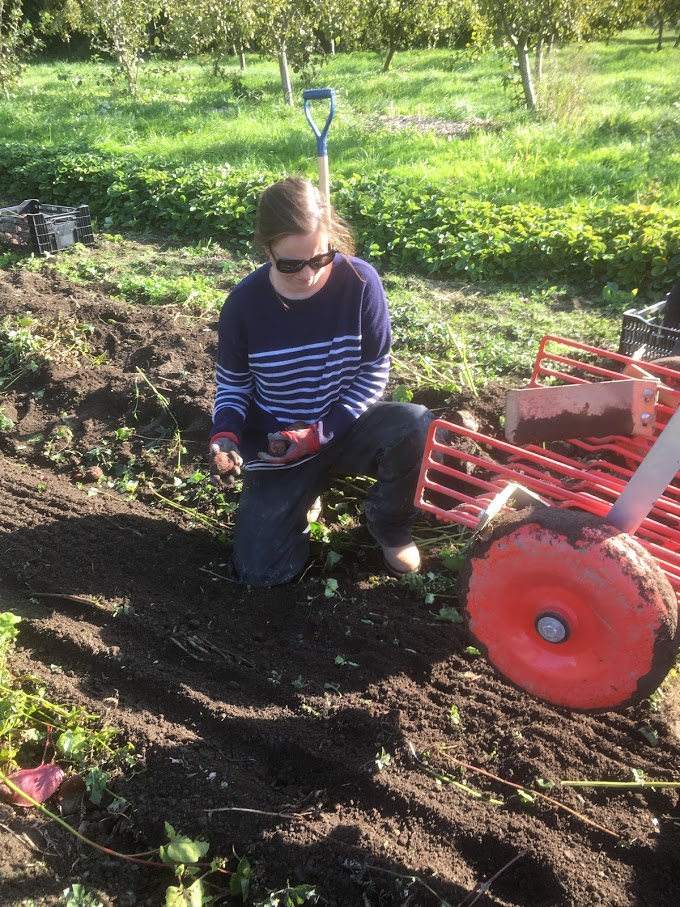
Potato harvest, October 8, 2019.
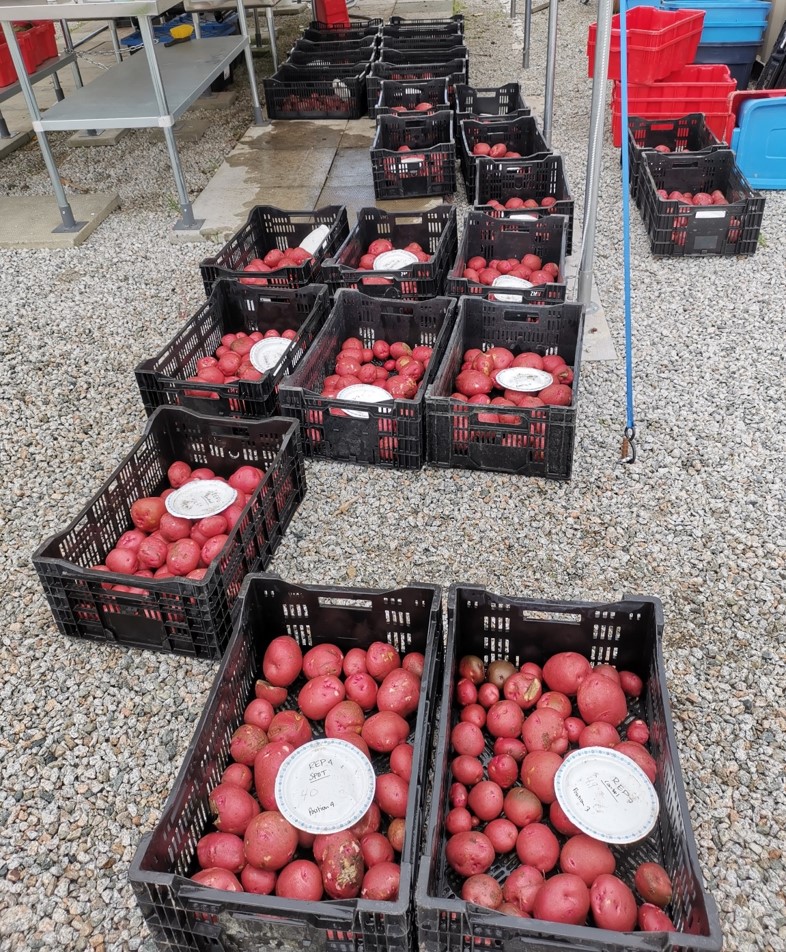
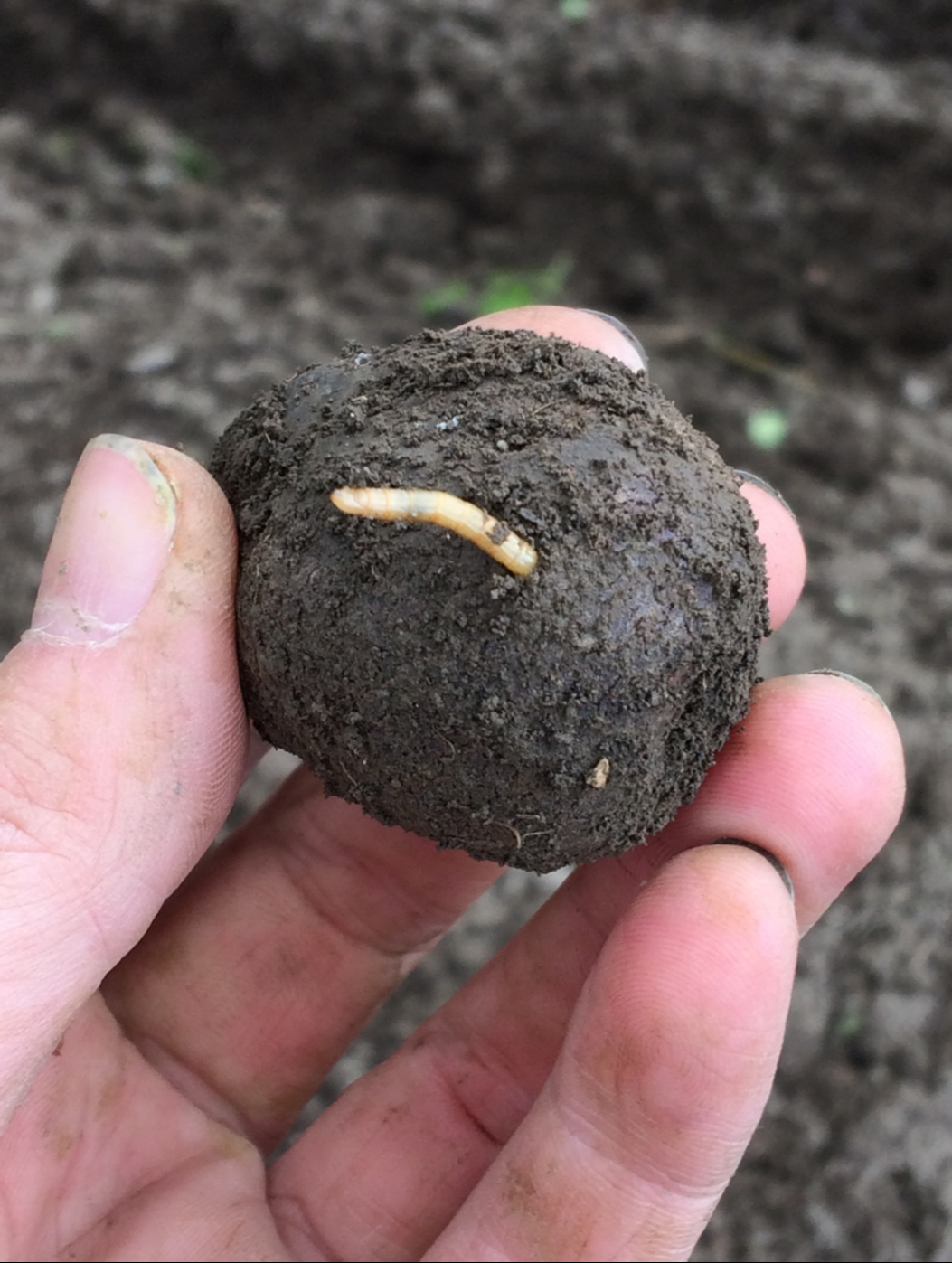
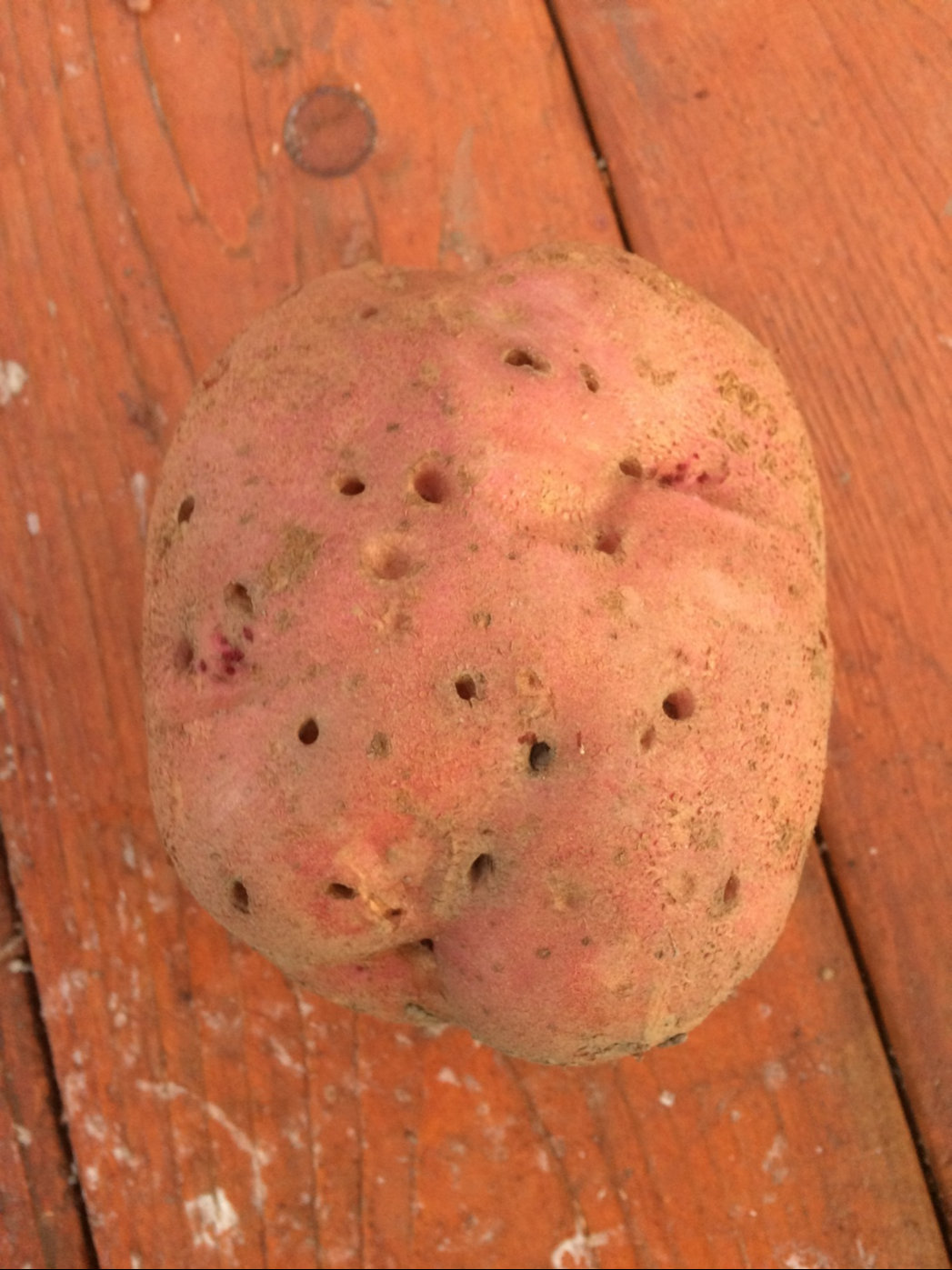
Statistical Analysis:
Data were tested for normality (Shapiro-Wilk) and subjected to ANOVA to test for treatment effects. All statistical testing was conducted using the jamovi interface for R (ɑ = 0.05).
Results:
Neither M. brunneum nor application method affected potato yield or wireworm damage rates (Figs 1-3). A strong edge effect was observed, with lower yields along the eastern edge of the experimental site (Fig. 4).
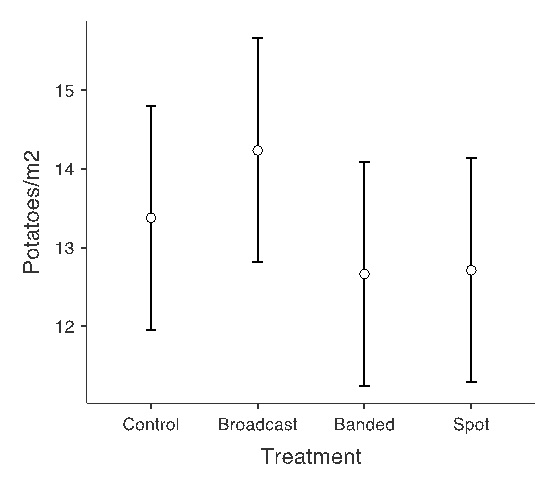
Figure 1. Potato count by treatment. Error bars denote standard error of the mean.
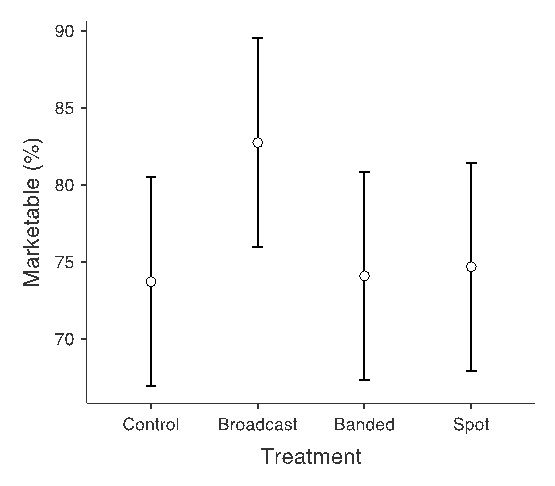
Figure 2. Proportion of potatoes that were marketable by treatment. Error bars denote standard error of the mean.
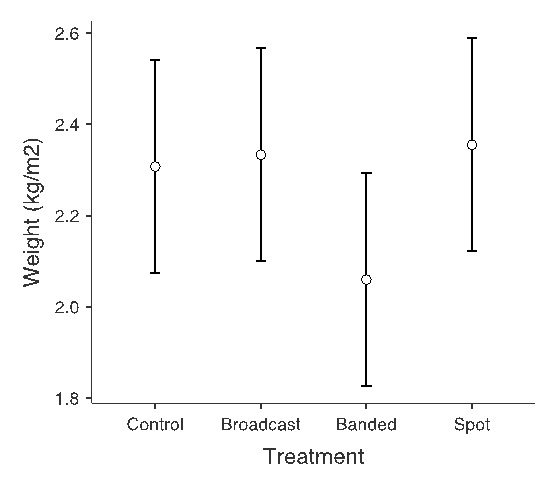
Figure 3. Potato weight by treatment. Error bars denote standard error of the mean.
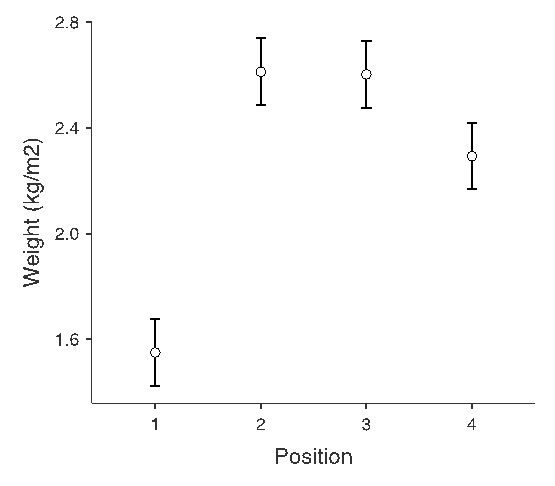
Figure 4. Potato weight by plot position within each replicate, ranging from east (1) to west (4). Error bars denote standard error of the mean.
Discussion:
More variability was observed within treatments than between treatments, possibly obscuring treatment effects. The experimental site showed a strong edge effect, with lower yields in plots on the eastern edge (Fig. 4), but blocking was conducted from north to south.
Non-treatment sources of variation that could not be blocked out may have included differences in initial wireworm populations, soil fertility, soil moisture, or soil temperature.
Conclusion:
This experiment found no evidence that M. brunneum reduces wireworm damage or improves potato yield. No differences were observed between M. brunneum application methods.
Acknowledgement:

Thank you to Mike Bomford and Todd Kabaluk for the technical support and research expertise, Lindsay Dodds for her constant assistance on and off the field, and Andy Smith for taking time out of his day to provide me with equipment and patiently answering questions while I learned how to use it. Funding from Organic Science Cluster 3.